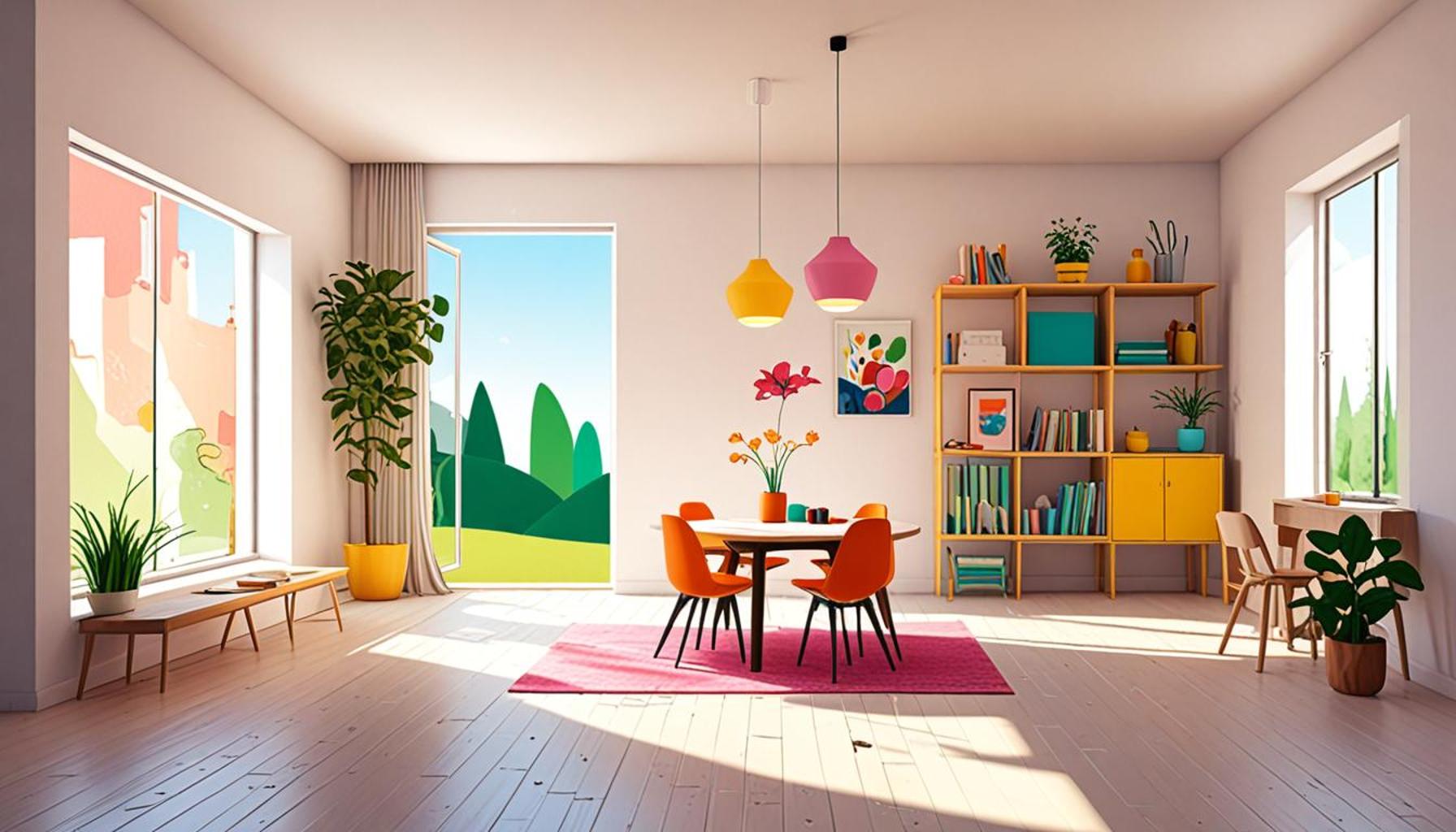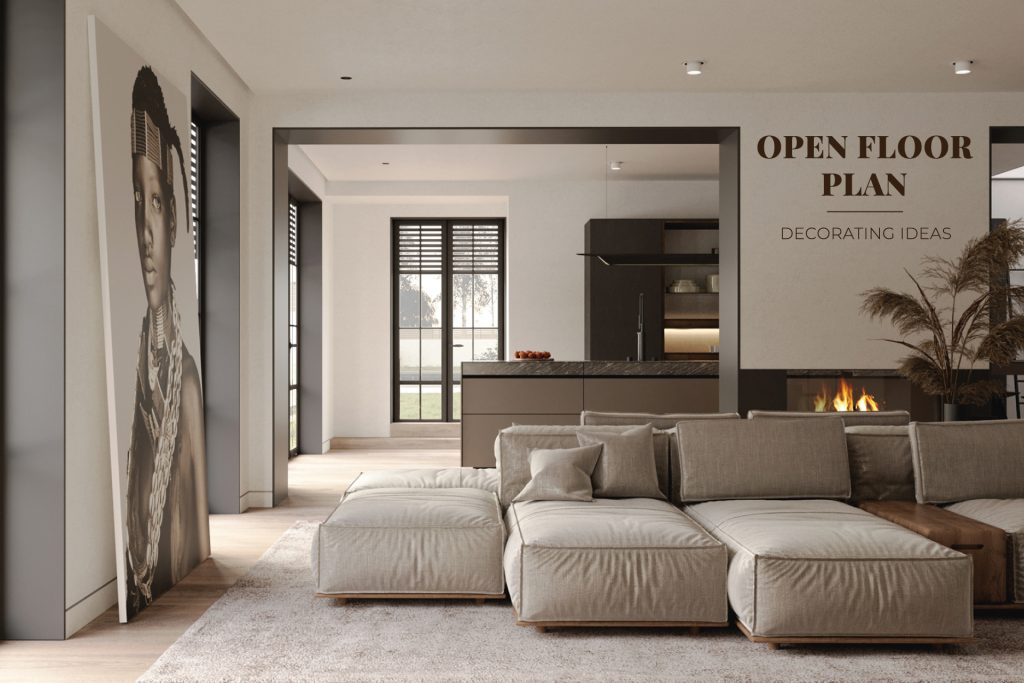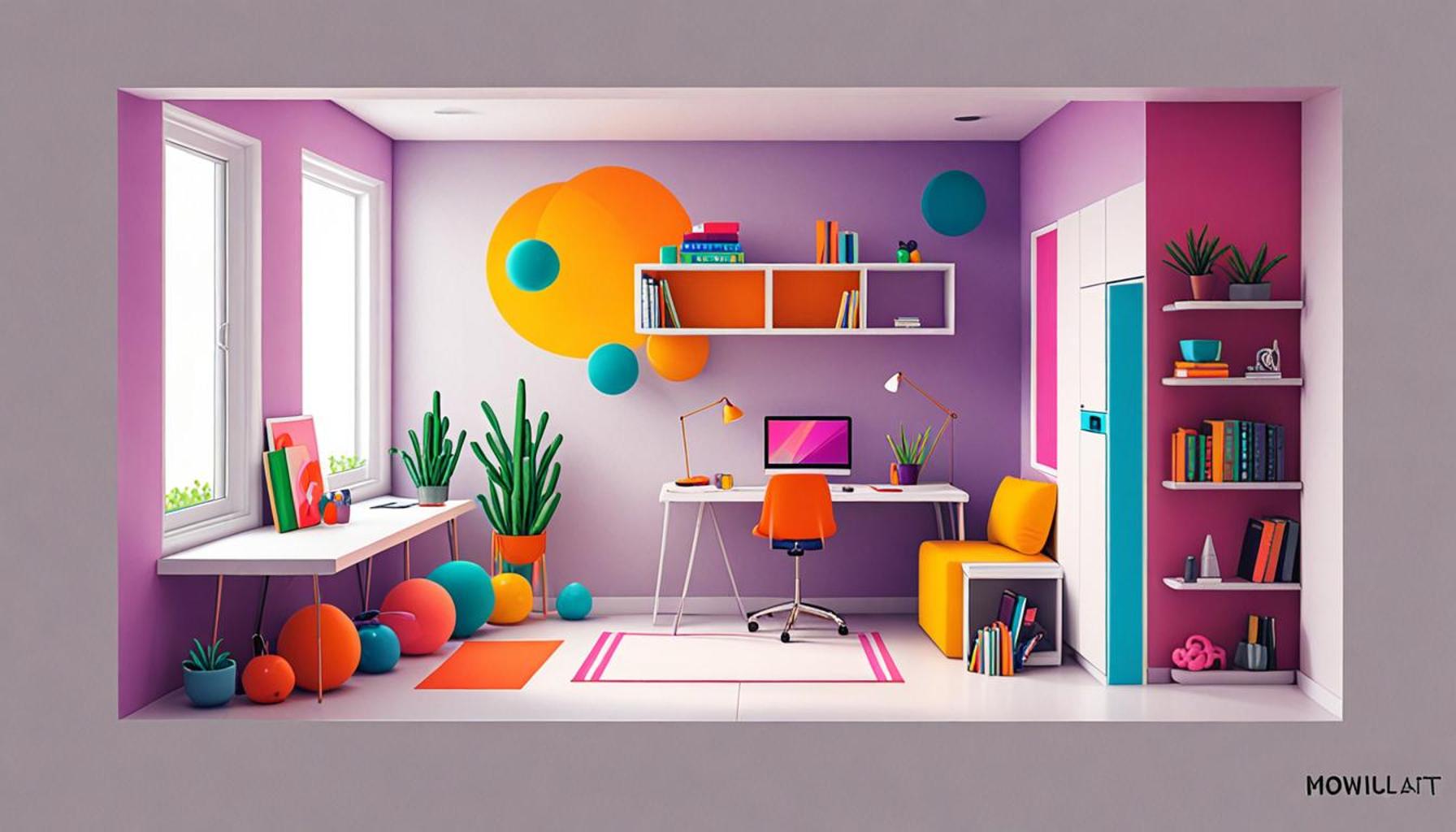Transforming Open Spaces: Minimalist Strategies to Create Pleasant and Functional Environments

Exploring the Potential of Minimalist Open Space Design
Open spaces, often found in urban settings, can be transformed into vibrant communal areas with the use of minimalist strategies. By embracing simplicity, these spaces can become not just visually appealing, but also highly functional. Minimalism, by its nature, seeks to eliminate the unnecessary, allowing the essential elements to stand out and be appreciated.
One of the key advantages of adopting minimalist design in open spaces is the improved aesthetics. When spaces are uncluttered, clean lines, balanced proportions, and carefully chosen design elements can work together to create a cohesive visual experience. For instance, the iconic development of the High Line in New York City showcases an astonishing transformation of an abandoned railway into a lush, minimalist park. The designers focused on a few well-placed benches, strategic plantings, and open pathways that enhance the natural beauty while promoting relaxation and interaction among visitors.
In terms of enhanced functionality, minimalist open spaces allow for more versatile uses. Parks that embrace minimalist principles can accommodate diverse activities, from yoga classes to small concerts. For example, Pioneer Courthouse Square in Portland, Oregon, has been designed to serve as a flexible community hub where spontaneous gatherings can take place, benefiting from an open layout that invites social interactions.
Moreover, increased accessibility is a significant benefit of minimalist design. Clutter-free environments promote safety, making it easier for people of all ages and abilities to navigate the space. Streetscapes that prioritize pedestrian pathways and integrate greenery not only enhance safety but also encourage residents to engage with their surroundings more fully. Notable examples include the redesign of several streets in San Francisco, where car traffic was de-emphasized to create open pedestrian areas, leading to a dramatic increase in foot traffic and community engagement.
Across the United States, cities are increasingly embracing these minimalist principles to revitalize parks, plazas, and community spaces. The trend towards open seating arrangements, for example, fosters conversation and connection among strangers, breaking down social barriers. Additionally, incorporating natural elements such as trees, water features, and green walls can enhance the calming atmosphere of these spaces, promoting well-being in densely populated urban areas.

Ultimately, the journey into the world of minimalist open space design is not just about beautification; it is also about creating meaningful community experiences. As cities continue to evolve, the focus on simplicity in amenities that prioritize necessity over excess becomes vital in fostering civic pride and community cohesion. Through thoughtful planning and design, urban open spaces can become true reflections of their communities, inviting residents to engage with their environment in new and fulfilling ways.
DISCOVER MORE: Click here to learn about the importance of intention in your minimalist space
Principles of Minimalism in Open Space Design
To effectively transform open spaces using minimalist strategies, it is essential to focus on a few fundamental principles that guide the design process. Minimalism emphasizes function, simplicity, and clarity, which can be translated into urban environments in various impactful ways. These principles not only enhance the appearance of public areas but also invite community engagement, providing a platform for social interaction, recreation, and relaxation.
1. Prioritizing Essential Elements
One of the cornerstones of minimalist design is the notion of prioritizing essential elements over the superfluous. In open space design, this can manifest in the strategic selection and placement of features. For example, a well-placed bench under a shade tree serves both aesthetic and functional purposes, inviting people to sit and socialize. To achieve this, urban planners can:
- Assess the space’s natural characteristics, such as sunlight, wind direction, and existing flora.
- Incorporate functional furniture that blends seamlessly into the environment.
- Utilize native plant species to minimize maintenance and enhance local biodiversity.
These focused efforts create a harmonious layout where each feature contributes to the overall functionality of the space while reducing visual clutter.
2. Implementing Flexibility in Design
Flexibility is another fundamental principle of minimalist open space design. Parks and plazas should be adaptable to various activities and events, which can foster community engagement and inclusiveness. Spaces that can accommodate multiple uses—from farmers markets to art installations—become valuable assets to neighborhoods. Urban planners can enhance flexibility by:
- Designing areas with movable furniture to allow for customized layouts.
- Creating open spaces that can easily transition from passive recreation to active events.
- Incorporating designated zones that can serve specific purposes, such as performance areas or gathering spots.
The emphasis on flexibility not only enhances user experience but also ensures these spaces remain relevant as community needs evolve.
3. Emphasizing Natural Elements
Integrating natural elements in minimalist design brings an organic touch to urban environments while promoting sustainable practices. The use of greenery, water features, and natural materials can significantly enhance the ambiance. Features such as green walls or community gardens can contribute to the visual appeal while improving air quality and promoting biodiversity. To emphasize natural elements, designers can:
- Incorporate permeable surfaces to manage rainwater effectively and reduce runoff.
- Utilize trees and shrubs to create shaded spots that provide comfort during warm seasons.
- Feature water installations that add a tranquil atmosphere and attract wildlife.
The integration of these elements not only beautifies open spaces but also fosters a sense of connection to nature, which is vital in densely populated urban areas.
Overall, embracing minimalist strategies in open space design can lead to inviting, functional, and aesthetically pleasing environments that resonate with the community’s needs. As cities across the United States explore these principles, the positive impact on social interactions, mental well-being, and environmental sustainability becomes increasingly apparent.
As we delve deeper into the concept of transforming open spaces, it becomes clear how impactful minimalist strategies can be. These approaches not only aestheticize spaces but also enhance their functionality. The use of clean lines and neutral palettes can infuse harmony into environments that otherwise feel chaotic or cluttered. This is particularly beneficial in urban areas, where open spaces often suffer from overcrowding and disorganization.Minimalism encourages the intentional selection of furnishings and features, promoting a sense of tranquility and purpose. For instance, outdoor seating areas can be designed using simple, durable materials that withstand the elements while offering an inviting atmosphere for relaxation and social interaction. Such choices do not just boost visual appeal but also ensure longevity and low maintenance, fostering sustainability—a core tenet of minimalist design.Moreover, carefully planned greenery plays a crucial role in transforming spaces. By incorporating native plants and natural landscaping, we can create a seamless blend between urban life and nature. This approach not only enhances biodiversity but also improves air quality and provides essential shade, making public spaces more enjoyable year-round.Lighting, another essential element, should be approached with the same minimalist mindset. Strategically placed, energy-efficient lighting can highlight features of an open space while ensuring safety and security after dark. The right lighting not only accentuates the beauty of minimalist design but also influences mood and usage of the space.To spark curiosity and encourage exploration, it’s fundamental to create pathways that guide movement through these open spaces while preserving areas for spontaneous gathering. Incorporating multifunctional zones allows for various communal activities, fueling social interactions that are paramount in urban settings. In promoting interaction and engagement through such designs, we must emphasize the psychological benefits of open spaces. Studies indicate that access to well-designed open environments can reduce stress, foster creativity, and improve overall well-being. Thus, adopting minimalist strategies in transforming these areas is not merely an aesthetic choice; it’s a vital public health initiative.The potential of transforming open spaces through minimalist strategies highlights a fascinating intersection of design, environmental psychology, and urban planning that warrants deeper exploration and understanding. As we push forward, these insights might inspire innovative applications and adaptations that address the unique challenges and opportunities within various communities. To further elucidate these advantages, let’s take a look at the table below:
| Category 1 | Category 2 |
|---|---|
| Design Appeal | Sleek aesthetics with clean lines create visually pleasing environments. |
| Functionality | Multifunctional spaces promote usability and social interactions. |
| Environmental Benefits | Incorporating greenery improves biodiversity and air quality. |
| Well-being | Access to well-designed spaces reduces stress and enhances quality of life. |
DISCOVER MORE: Click here to learn about innovative storage solutions
Integrating Community Needs in Minimalist Open Space Design
As urban areas continue to evolve, it becomes imperative to integrate community needs into the minimalist design framework. By actively engaging with residents and understanding their expectations, urban planners can create open spaces that are not only functional but also foster a deep sense of belonging among users. Community involvement can manifest in several forms, leading to the development of spaces that resonate with the public in meaningful ways.
1. Engaging the Community in the Design Process
Creating successful open spaces begins with engaging community members in the planning process. This participatory approach ensures that the design aligns with the aspirations and lifestyles of local residents. Techniques for engaging the community effectively may include:
- Hosting workshops and focus groups to collect input and insights from diverse demographic groups.
- Utilizing surveys and social media platforms to gather feedback and gauge interest in proposed features.
- Organizing design charrettes where community members brainstorm and collaborate with landscape architects.
Not only do these interactive sessions yield valuable suggestions for the design, but they also create a sense of ownership among residents, ensuring the space caters to their needs and preferences.
2. Celebrating Local Culture and History
Incorporating elements that celebrate local culture and history can significantly enhance the emotional connection to open spaces. Minimalist designs can serve as canvases that reflect the identity of a community. This can be achieved through:
- Public art installations that represent local heritage or significant events.
- Historical markers and plaques that inform visitors about the area’s past.
- Design elements inspired by local architecture, creating a cohesive aesthetic that resonates with the surrounding environment.
By embracing local stories and experiences, open spaces can become vibrant focal points that reflect the community’s character and foster pride among residents.
3. Creating Zones for Diverse Activities
Minimalist open spaces must be versatile to accommodate a variety of activities suitable for different age groups and interests. By delineating specific zones within the space, urban planners can promote inclusivity while encouraging active participation. Effective strategies for creating diverse activity zones include:
- Designating areas for play, such as playgrounds or sports courts, that are easily accessible to children and families.
- Incorporating quiet areas equipped with comfortable seating for relaxation and reflection.
- Developing performance spaces that can host concerts, theater productions, or community events, facilitating cultural expression.
These carefully curated zones ensure that open spaces cater to a broad audience, enhancing their appeal while fostering social bonds and community interaction.
Moreover, as seen in projects like the High Line in New York City or Millennium Park in Chicago, well-designed open spaces can serve as catalysts for revitalizing neighborhoods. Their success demonstrates the potential for minimalist strategies to not only transform physical environments but also to enrich community dynamics, ultimately leading to happier, more engaged citizens.
DISCOVER MORE: Click here to enhance your productivity
Conclusion: The Future of Open Spaces through Minimalist Design
In summary, the transformation of open spaces through minimalist strategies represents a powerful approach to designing environments that are not only functional but also inviting. By engaging the community in the design process, celebrating local culture and history, and creating diverse activity zones, urban planners can develop spaces that genuinely reflect the identity and needs of their neighborhoods. These principles encourage inclusivity and foster a sense of belonging, enabling residents to shape the environments they inhabit.
Moreover, as cities across the United States grapple with challenges posed by urbanization, population growth, and environmental sustainability, minimalist open space design emerges as a vital solution. Prominent examples like the High Line and Millennium Park not only demonstrate successful transformations but also set a benchmark for future projects. They highlight how simplicity in design can lead to complexity in functionality, offering various experiences and purposes for different community members.
Ultimately, the pursuit of creating pleasant and functional open spaces requires holistic collaboration and innovative thinking. As we envision the future of our urban landscapes, let us embrace minimalist strategies that prioritize human interaction, ecological sustainability, and social vibrancy. By doing so, we can craft environments that profoundly enhance the quality of life for all citizens, encouraging exploration and connection in the heart of our cities.


